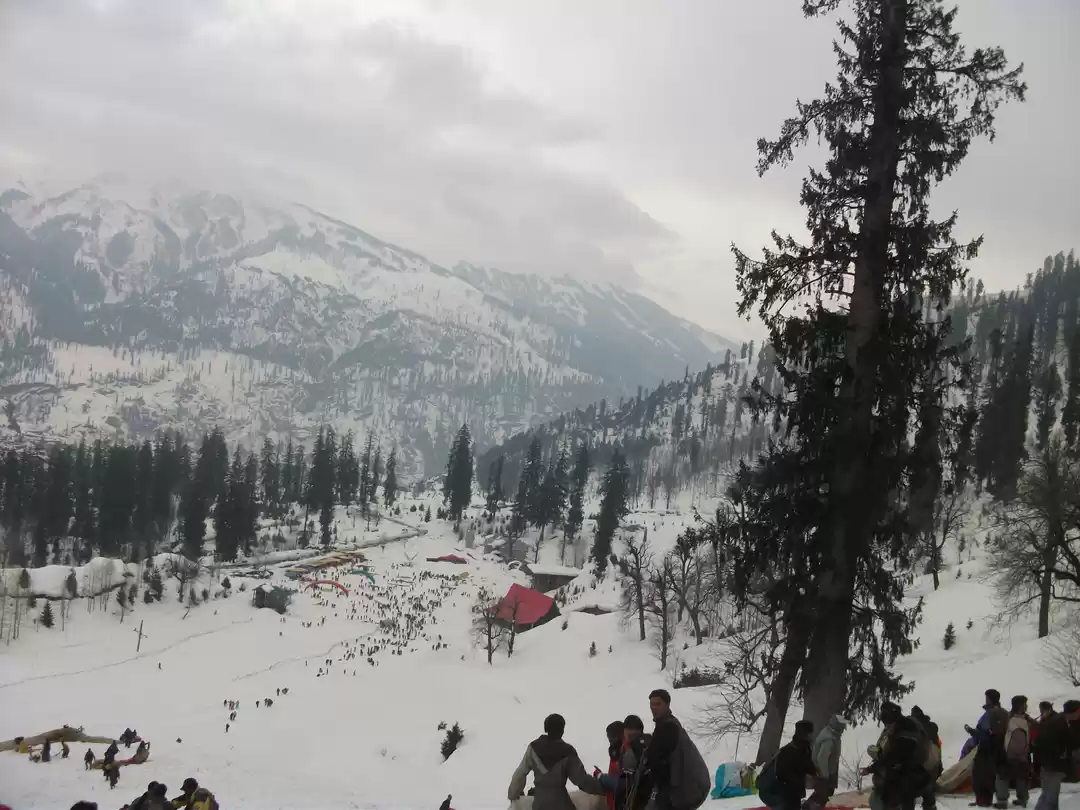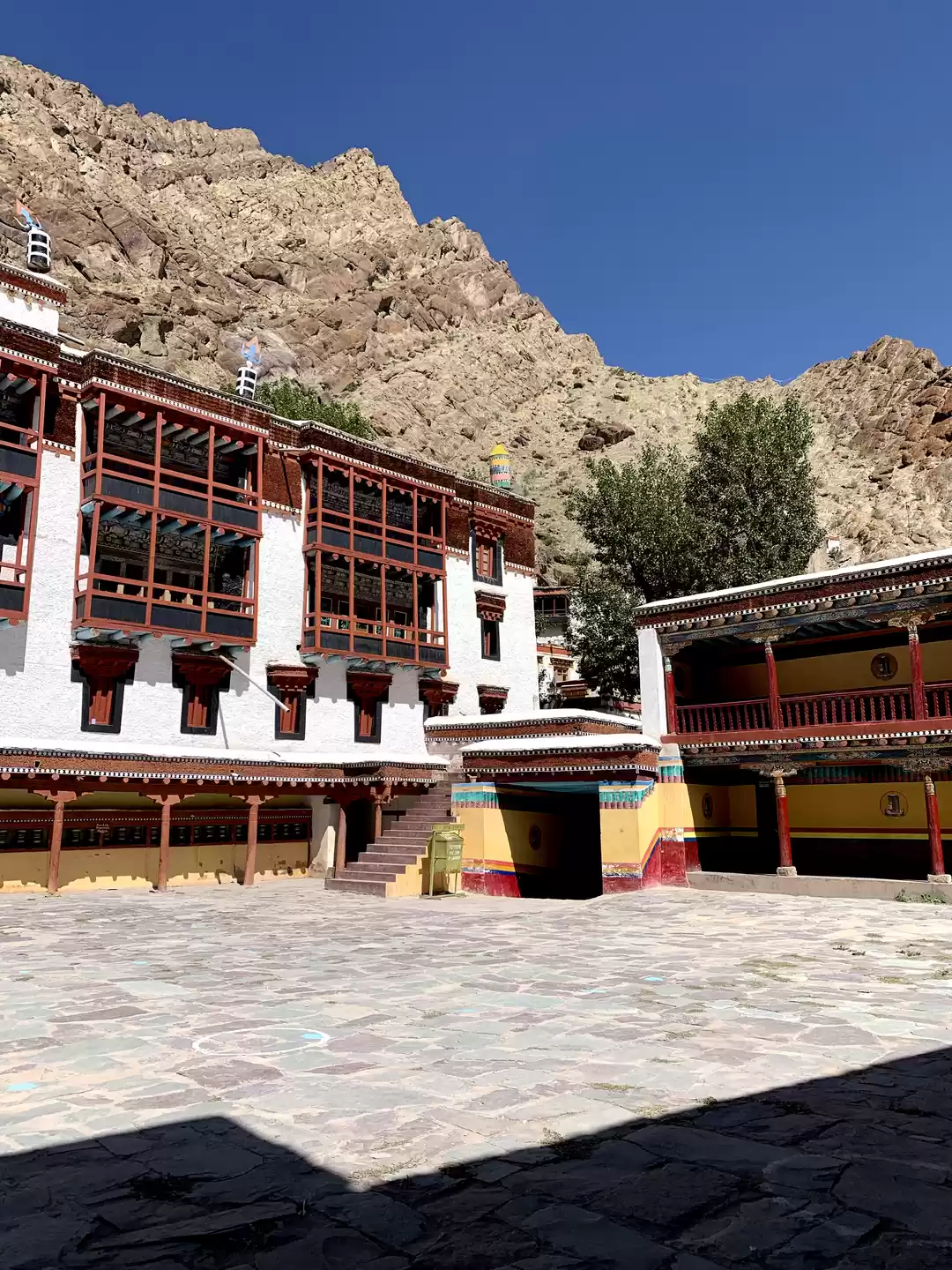Imagine visiting a majestic monastery that resembles the famous Potala Palace of Tibet, perched on a hilltop overlooking the stunning Indus Valley. Imagine exploring the ancient halls and temples that house priceless relics and statues of Buddhist deities. Imagine witnessing the colorful and vibrant festivals that celebrate the rich and diverse culture of Ladakh. If you are looking for such an experience, then you should visit the Thiksey Monastery, one of the most beautiful and prominent monasteries in Ladakh.
In this article, we will tell you everything you need to know about the Thiksey Monastery, from its history and culture to its travel and tourism. Read on to find out why you should add this monastery to your bucket list.

History and Culture
The Thiksey Monastery was founded in the 15th century by Sherab Zangpo, a disciple of the founder of the Gelugpa sect of Tibetan Buddhism, Tsongkhapa. The monastery was built on the ruins of an earlier temple, and expanded over the years by successive lamas and rulers. Today, the monastery is home to over 100 monks, who follow the teachings and practices of the Gelugpa school.
The monastery is spread over 12 levels, and consists of several buildings and structures, each with its own significance and charm. The most impressive and iconic feature of the monastery is the Maitreya Buddha statue, a 15-meter-high sculpture of the future Buddha, made of clay and copper. The statue occupies two floors of the monastery, and is adorned with gold paint and precious stones. The statue is said to be the largest of its kind in Ladakh, and attracts thousands of devotees and tourists every year.
Another attraction of the monastery is the Tara temple, dedicated to the female bodhisattva of compassion, Tara. The temple contains 21 images of Tara, each with a different color and expression, representing her various aspects and qualities. The temple is also decorated with exquisite paintings and murals, depicting the life and teachings of Buddha.
The monastery also has a large and ornate assembly hall, where the monks gather for prayers and rituals. The hall is decorated with statues, thangkas, and banners, and has a throne for the head lama. The hall also has a library, where ancient scriptures and manuscripts are preserved and studied.
One of the best places to enjoy the panoramic view of the monastery and the valley is the rooftop, where you can see the white-washed buildings contrasted with the blue sky and the green landscape. The rooftop also has a small temple, where you can light a butter lamp and make a wish.
The Thiksey Monastery is not only a place of worship and learning, but also a place of culture and heritage. The monastery hosts and participates in several festivals and events throughout the year, showcasing the rich and diverse traditions of Ladakh and Buddhism. Some of the major festivals and celebrations that take place at the monastery are:
Yuru Kabgyat: This is a two-day festival, usually held in June or July, that commemorates the victory of good over evil. The festival involves masked dances, music, and prayers, performed by the monks in colorful costumes. The dances depict the stories and legends of Buddhism, and the masks represent various gods and demons. The festival culminates with the burning of an effigy of evil, symbolizing the purification of the world.
Gustor: This is another two-day festival, usually held in October or November, that celebrates the birthday of Tsongkhapa, the founder of the Gelugpa sect. The festival also involves masked dances, music, and prayers, performed by the monks in elaborate costumes. The dances portray the triumph of Buddhism over other religions, and the masks represent the protectors and guardians of Buddhism. The festival ends with the cutting of a cake, representing the enemies of Buddhism, and the distribution of its pieces among the devotees.
If you want to experience the culture and spirituality of Ladakh and Buddhism, you should not miss these festivals, as they will give you a glimpse of the history and beliefs of the people and the monastery.
Travel and Tourism
If you are planning to visit the Thiksey Monastery, you will need some practical information and tips to make your trip smooth and enjoyable. Here are some of the things you should know before you go:
Accommodation: If you want to stay near the monastery, you have a few options to choose from. You can stay at the guest house run by the monastery, which offers basic but comfortable rooms with attached bathrooms and hot water. You can also enjoy the vegetarian meals prepared by the monks, and join them for their morning prayers. The guest house charges a nominal fee, and you can book your room in advance by contacting the monastery. Alternatively, you can stay at one of the hotels or homestays located near the monastery, which offer more facilities and amenities, such as Wi-Fi, TV, and room service. You can also find some camps and resorts in the vicinity, which offer a more luxurious and adventurous stay, with tents, cottages, and activities like rafting, trekking, and biking.
Transport: The Thiksey Monastery is located about 20 km from the main town of Leh, and you can reach it by various modes of transport. You can take a bus from the Leh bus stand, which runs every hour and costs around 30 rupees. You can also take a shared taxi or a private taxi from the Leh market, which will charge you around 300 rupees or 500 rupees respectively. You can also rent a bike or a car from Leh, which will give you more flexibility and convenience, but will also cost you more. You can also hire a guide or a driver from Leh, who will take you to the monastery and explain its history and significance. The monastery is open from 7 am to 7 pm, and the entry fee is 30 rupees per person.
Best time to visit: The best time to visit the Thiksey Monastery is from May to September, when the weather is pleasant and the valley is green and blooming. This is also the peak season for tourism, so you can expect more crowds and higher prices. If you want to avoid the rush and enjoy the snow, you can visit the monastery from October to April, when the weather is cold and the valley is white and frozen. This is also the off-season for tourism, so you can expect less crowds and lower prices. However, you should also be prepared for road closures, flight cancellations, and limited facilities due to the harsh weather. If you want to witness the festivals and celebrations at the monastery, you should plan your visit according to the lunar calendar, as the dates vary every year.

Nearby places to see
If you have some extra time and want to explore more of Ladakh, you can visit some of the nearby places that are worth seeing. Some of the popular places are:
Hemis Monastery: This is the largest and the richest monastery in Ladakh, located about 45 km from Thiksey. It belongs to the Drukpa sect of Tibetan Buddhism, and is famous for its annual Hemis festival, which involves masked dances, music, and prayers. The monastery also has a museum, which displays rare and valuable artifacts, such as thangkas, statues, and weapons.
Shey Palace: This is the former summer palace of the kings of Ladakh, located about 15 km from Thiksey. It was built in the 17th century, and is now in ruins. However, it still has some attractions, such as the Shey Monastery, which houses a 12-meter-high statue of Shakyamuni Buddha, made of copper and gold. The palace also offers a splendid view of the Indus River and the surrounding mountains.
Stok Palace: This is the current residence of the royal family of Ladakh, located about 25 km from Thiksey. It was built in the 19th century, and is now open to the public. It has a museum, which exhibits the royal costumes, jewelry, paintings, and weapons. The palace also has a library, which contains ancient manuscripts and books. The palace also organizes cultural shows and events, such as folk dances, music, and puppet shows.
Leh Palace: This is the former winter palace of the kings of Ladakh, located in the heart of Leh. It was built in the 17th century, and is now a heritage site. It has nine floors, and is one of the tallest buildings in Ladakh. It has a museum, which showcases the royal history and culture of Ladakh. The palace also has a rooftop, which offers a panoramic view of the Leh town and the surrounding mountains.
These are some of the places that you can visit near the Thiksey Monastery, and enjoy the beauty and diversity of Ladakh.
Conclusion
The Thiksey Monastery is one of the most amazing and attractive places to visit in Ladakh. It offers a unique and unforgettable experience of the history, culture, and spirituality of Ladakh and Buddhism. Whether you are a devotee, a tourist, or a traveler, you will find something to admire and appreciate at the Thiksey Monastery. So, what are you waiting for? Book your trip to the Thiksey Monastery today, and discover the mini Potala Palace of Ladakh. You will not regret it.
























